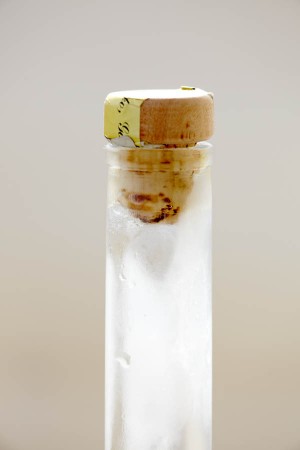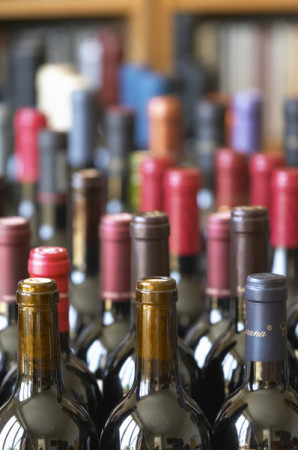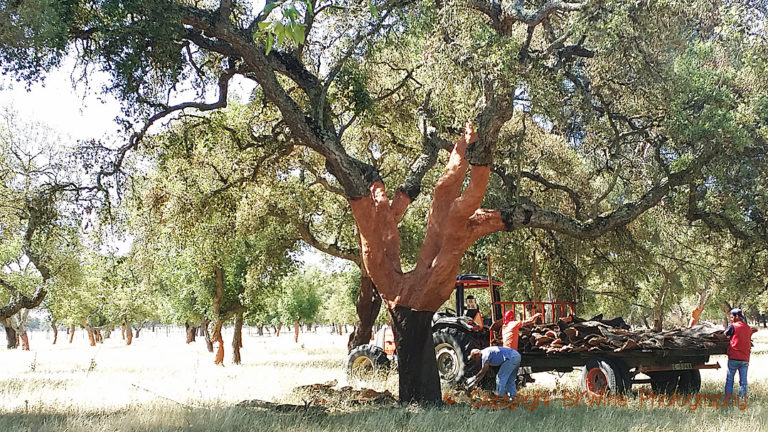Coravin lets you drink the wine without pulling the cork. At a price.
There are various devices that you can use to keep your wine longer after you have opened the bottles and a new one has just arrived. Let’s first look at what exists today.
Vacuum pumps

Some work with a “vacuum” (to be correct, a very, very partial vacuum): you put a cork in the opened partially-emptied bottle and then you pump out (some of) the air. Vacu Vin is the most famous of this type of “wine savers” and that brand has been turned into a whole series of kitchen utensils. There are others.
Personally I am very sceptical to this method. I have never tried it but intuitively it seems the wrong thing to do. Yes, it does remove a little bit of the oxygen but it also creates a low pressure (partial vacuum). The aromas in wine tend to be volatile components and at low pressure the will evaporate even quicker from the wine than at normal pressure…
Neutral gas
Another method is to fill the half-empty bottle with a neutral (“inert”) gas. You spray the gas into the bottle and it removes the air and oxygen in the bottle.
Private Preserve (that we have written about previously) and Vinospray are two brands that are relatively cheap and simple; they are just simple spray cans. There are more sophisticated (and expensive) versions too.
We have used this on several occasions (both brands I mentioned) and they seem to work quite well. If we have to keep a bottle for longer that we think it can last, this is the method we tend to use.
The cheapest and simplest method
The simplest, and cheapest, method is to simply put a cork in the half-finished bottle and put it in the refrigerator.

This works much better than what most people think. A wine does not go bad in a day or two or three. Our experience is that in many cases an opened bottle of wine keeps very well for more or less a week. Sometimes more, sometimes less. (Not a very fragile wine, of course.) A wine keeps much longer than you think!
New: A revolutionary medical device? Magic? Look! No corkscrew!
We just saw a new thing to keep the wine for a long time that really does look very interesting!
You don’t even have to open the bottle! Is it magic?
No, not really. It is a device called Coravin that inserts a thin Teflon-coated needle through the cork. The needle has (I assume) two channels. Through one channel a neutral gas (argon) is pushed into the bottle. Through the other channel in the needle the wine is pushed out of the bottle. And into your glass!
Once you have poured your glass of wine you pull the needle out of the cork. The needle is so thin that you can easily pull it out of the cork without the cork leaving the bottle. And then the cork “self-heals” from the little pin-prick from the needle.
And voilà.
Here it is in action (please, please iPhoners, please understand that videos are horizontal):
The inventor runs a medical device company so had the technologies needed for the design at hand.
But it does not come cheap… According to the Boston Globe, who carried the story, you will have to dish out $300 for the device. And that does not take into account all the extra bottles of wine you will be consuming just for the fun of it. But you cannot buy it. Not yet. You can so far only sign up on the company’s “waiting list”. That’s some marketing for you!
We have not tried it so we can really vouch for its efficiency.
Uppdate:
Since yesterday, when I wrote this article, the Coravin web site has been radically updated. The shop is now open. The device costs $299 and a gas capsule for 15 glasses is $10.95. And they have published a more detailed (well…) video, including the obligatory American whiskey voice voice-over:
A review
But take a look at the Wired blind test of various wine preservation devices. It seems to say the same thing as I suspect: Coravin works very well but is, hum, expensive. The other neutral gas devices work almost as well. The rest, well, they were not convinced.
Watch a Coravin on video on the Boston Globe web site: Don’t pull the cork — just pour the wine.
Here is Coravin’s own web site, if you want to sign up on the waiting list.
(There is also an interesting discussion on Wine Berserkers on the possibilities this opens for wine counterfeiters…!)










One Response